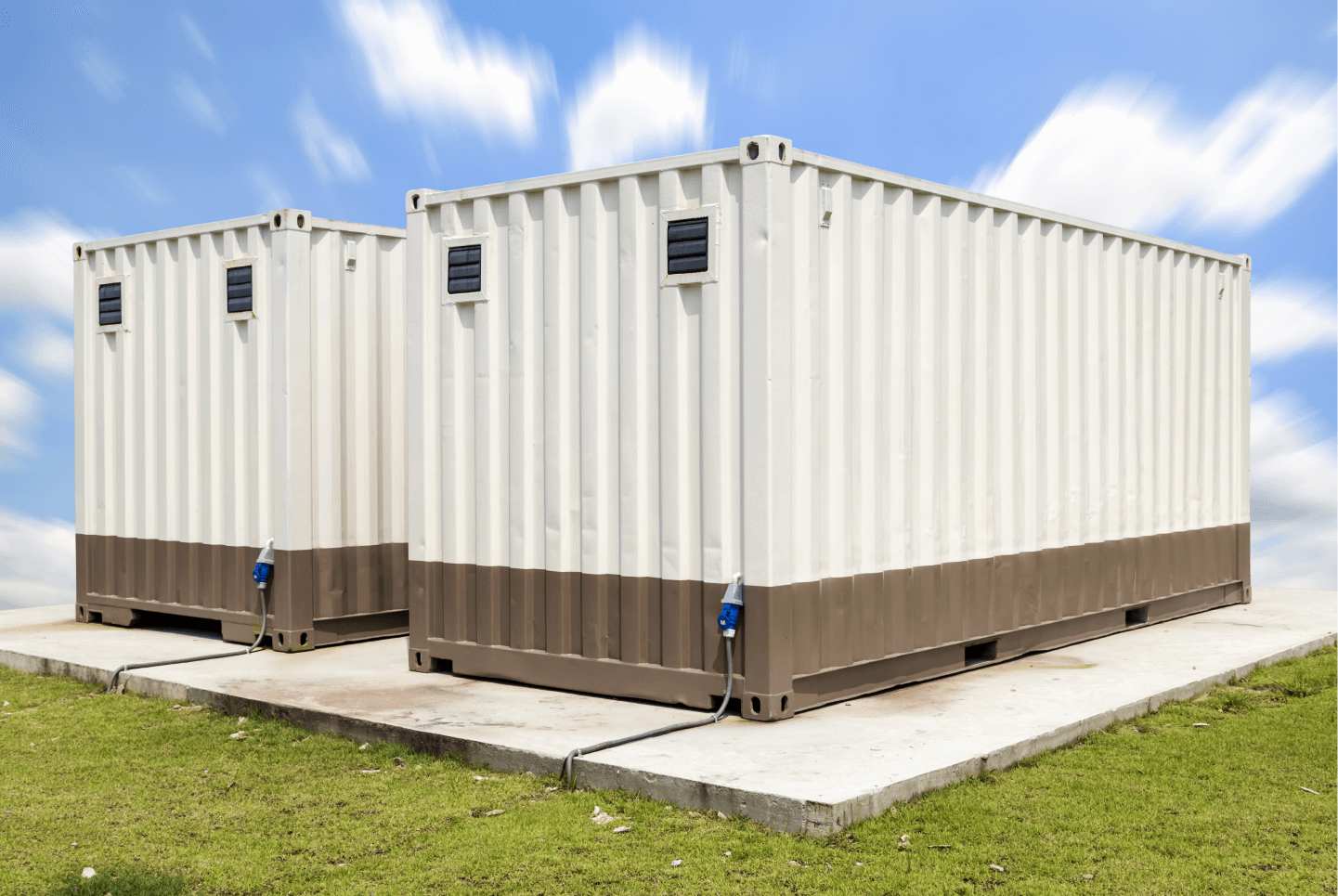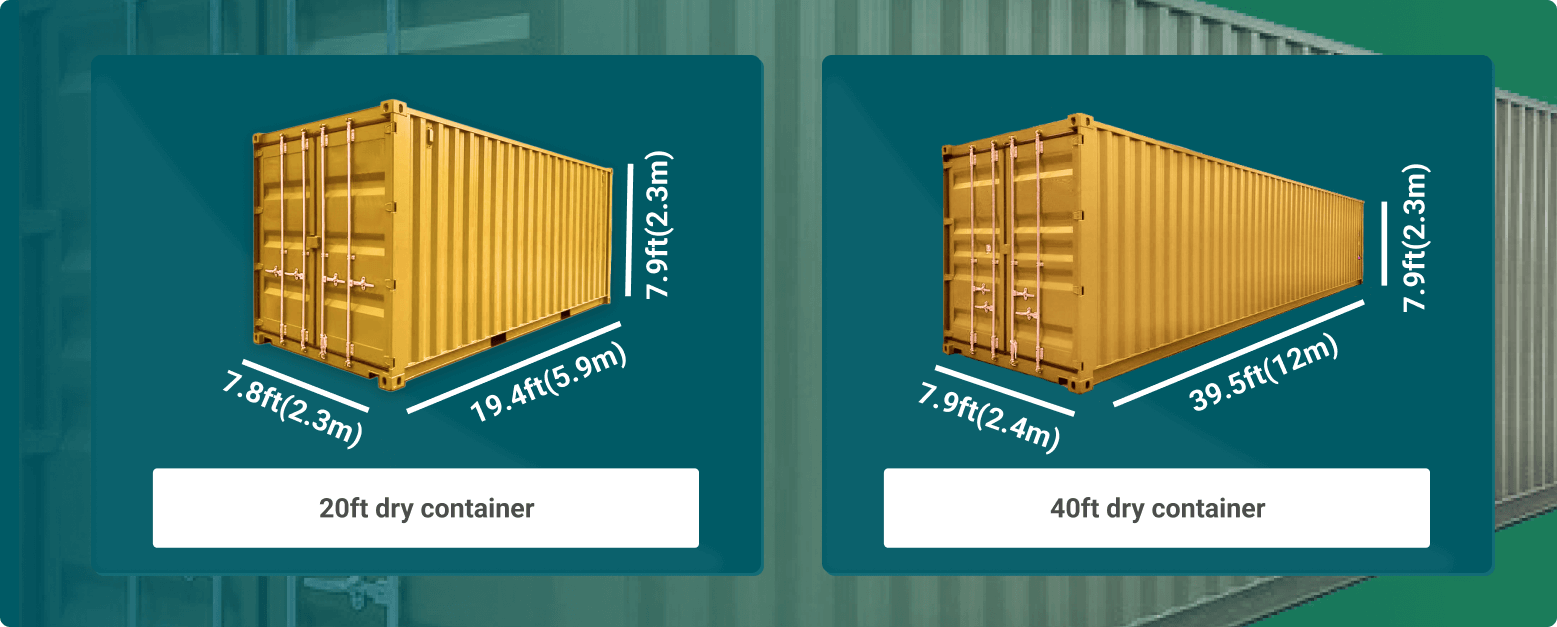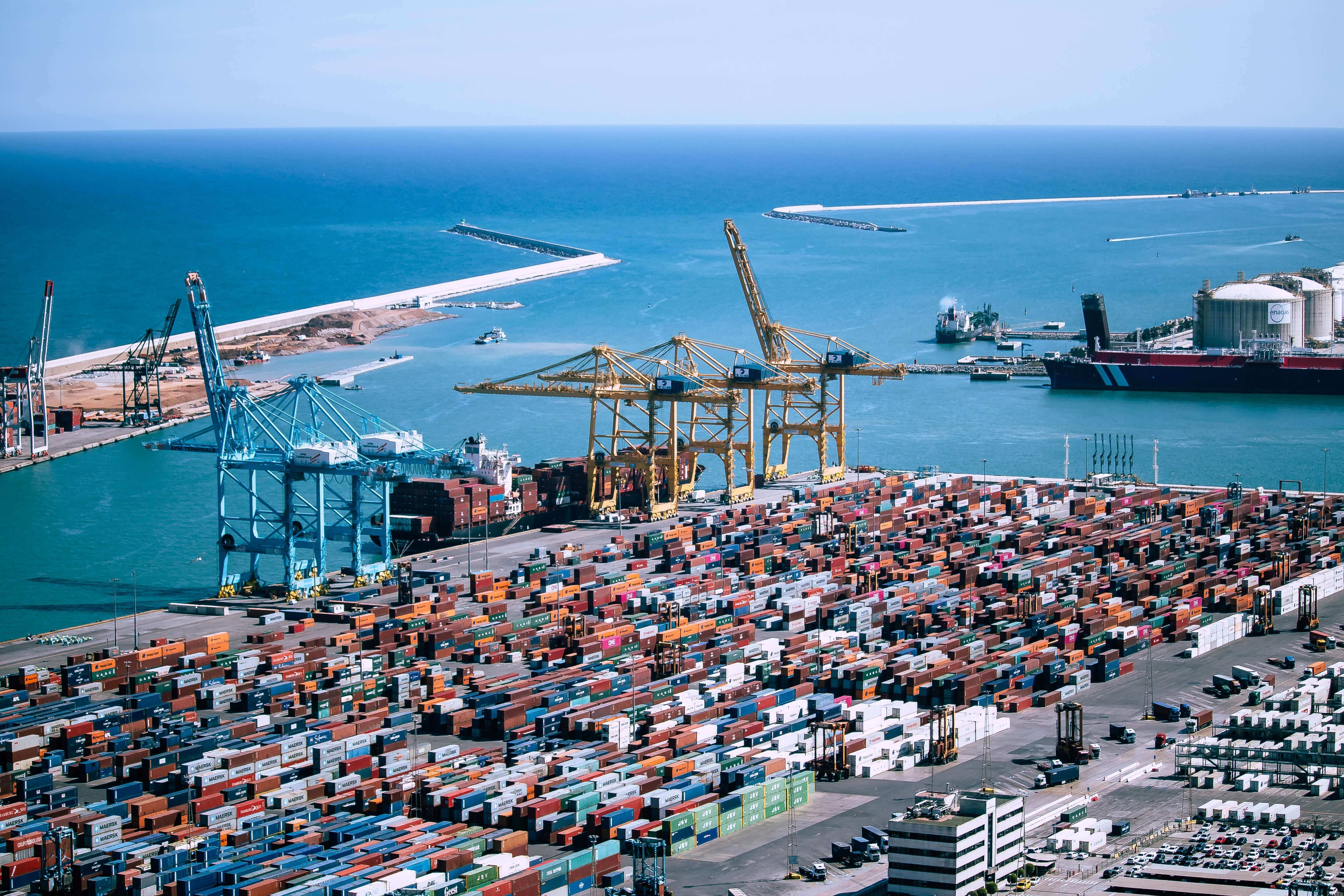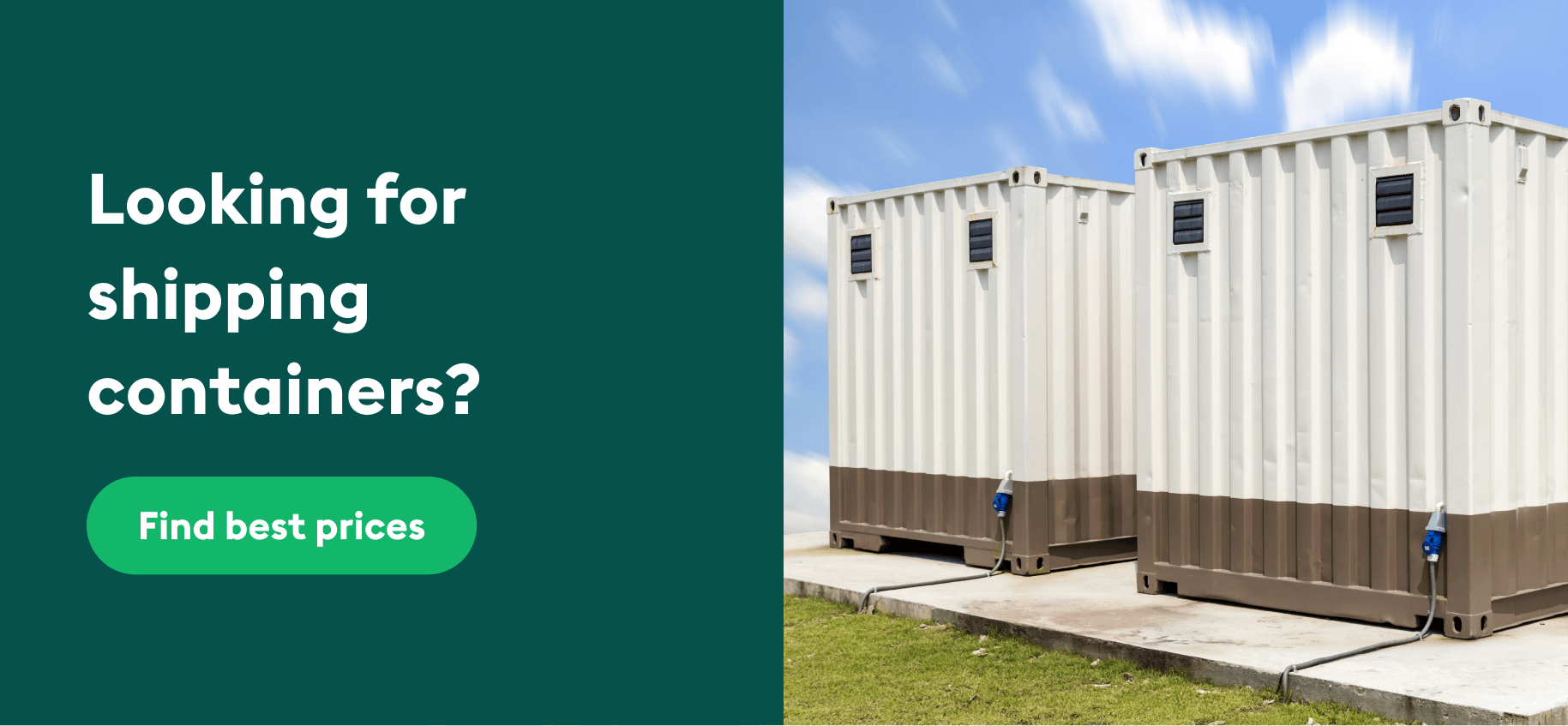Looking to learn more about ventilated containers, their uses, and advantages? In this blog post, you’ll get all of the answers you need. Plus, find out how to get containers of all types, sizes, and conditions on Container xChange.
Do you have climate and temperature-sensitive shipments like coffee or cocoa beans you need to transport or store? Wondering how to keep them fresh from the time they leave the factory to the time they arrive in store? Then, the ventilated container is just right for you. Read on to learn all about this useful container type.
Also struggling to find containers of different types in specific locations? And let’s not even start on the hassle of vetting sellers online, right?
Luckily, on xChange, we’ve got 10,000+ containers available to buy and lease in over 2,500 locations around the globe. So you’re bound to find the equipment you’re looking for, at a price that suits your budget. Plus, all of our members are vetted, so you don’t have to worry about unreliable partners.
If you want to browse containers for your shipping needs right away, here’s how. Simply enter your location and the container type you’re after, and click ‘search’ to find quality containers at prices you’ll love.
What is a ventilated container?
As their name suggests, ventilated containers are fitted with special air vents or openings. These are usually found on the top and bottom side rails of the container. Vents can also be custom-fitted for specific types of cargo.
Ventilated containers are often known as ‘coffee containers’ because they’re used to transport coffee beans, as well as cocoa beans, and other high-moisture goods.

Now let’s learn more about the construction of a ventilated container.
Construction of ventilated containers
While most standard containers have small air vents, these are not large enough to create the type of airflow required for cargo like green coffee beans to remain fresh. In this case, a ventilated container is needed.
So how do ventilated containers work? Basically, larger vents allow air to circulate within the container, regulating the temperature inside.
Without proper ventilation, moisture, or ‘sweat’ builds up, damaging both the inner container walls as well as the goods inside. Container vents are also specially designed to prevent rain or sea spray from entering, as both fresh and sea water can damage cargo of all kinds.
There are different types of vents that can be used, depending on what kind of airflow is required, or how much. We’ll get to this in the next section.
Types of container ventilation
Two main types of ventilation exists for shipping containers: passive ventilation and active ventilation. Let’s take a look at the main differences below.
Passive container vents
Passive container vents are small openings that can be found on most standard dry containers. These are usually best for cargo that isn’t overly sensitive to climate changes, as they only promote minimal airflow.
Active container vents
Larger container vents can be installed to allow for more thorough airflow inside a container. These are known as ‘active container vents’, and often use mechanical fans to circulate air effectively. Active vents are also designed in such a way so as to prevent rain and sea spray from entering the container during shipping.
These vents need electricity to work, so keep in mind that there’s an extra cost involved with using this kind of ventilation for your cargo.
Ventilated cargo container vs standard dry container
Now, what’s the difference between a ventilated container and a standard dry container, you might be wondering? As mentioned above, most shipping containers have small vents somewhere on the body. However, ventilated containers are specifically designed to allow a regular flow of air throughout.
Vents on ventilated containers are usually bigger and more frequently placed than on a standard container. They’re often much more visible and may even protrude from the sides, so it’s easy to spot ventilated equipment.
Besides the air vents, there is no other major difference between a ventilated container and a standard dry container.
Why use a ventilated container?
So why do you need a ventilated container for goods like green coffee beans, cocoa beans, and other high-moisture products? Here are a few things that can happen to temperature and climate-sensitive goods if you transport or store them in a container without adequate vents:
- Condensation and moisture builds up inside the container
- Mold grows on stored items
- Rust forms on the interior steel walls of the container
- Bad smells occur from condensation, contaminating cargo
- Goods get damaged from exposure to extreme heat
Want to avoid any or all of the above? We thought so. In that case, it’s time to get yourself a ventilated container to ship your sensitive goods!
Dimensions of ventilated shipping containers
As most ventilated containers are simply standard containers with fitted vents, the dimensions are generally the same as for standard dry containers. Let’s look at some container dimensions below, so you can work out which size best suits your needs.
Standard container measurements
The 20ft container is great for transporting cargo intermodally (between trains, trucks and ships). Due to its smaller size, it can also be used at ports without sophisticated loading equipment.
The 40ft has double the capacity of the 20ft, yet is usually only around 30% more expensive. It’s great value for money if you have a lot of cargo to transport. The 40ft and 45ft HC containers have an extra foot of height, so you can transport taller cargo, or simply pack more inside.
| Measurements | 20ft | 40ft | 40ft HC | 45ft HC |
| Internal length | 5.9m / 19.4ft | 12.03m / 39.5ft | 12.03m/39.5ft | 13.55m/44.5ft |
| Internal width | 2.35m / 7.8ft | 2.4m / 7.9ft | 2.35m / 7.8ft | 2.35m / 7.8ft |
| Internal height | 2.39m / 7.9ft | 2.39m / 7.9ft | 2.70m / 8.10ft | 2.70m / 8.10ft |
| Tare weight | 2,300kg / 5,071.5 lbs | 3,750kg / 8,268.8 lbs | 3,900kg / 8,598 lbs | 4,800kg / 10,552 lbs |
| Payload capacity | 25,000 kg / 55,126.9 lbs | 27,600kg / 61,200 lbs | 28,600 kg / 63,052 lbs | 27,700kg / 61,067 lbs |
| Cubic capacity | 33.2 m3 / 1,172 cu ft | 67.7 m3 / 2,389 cu ft | 76.3 m3 / 2,694.5 cu ft | 86 m3 / 3,037 cu ft |
Curious about the dimensions of other container types? Get the full guide to container types, sizes and dimensions in this informative blog post.
Other container types: Standard and special containers for shipping and storage
Perhaps you’re looking for more than just ventilated containers? You’re in luck. On Container xChange, we’ve got all kinds of shipping containers available, in various conditions. You can get brand new (one-trip), used (cargo-worthy), and wind and watertight (WWT) equipment on our platform. The choice is yours.
If you’re wanting to transport or store dry cargo, such as furniture, paper, grains, clothing or electronics, a standard dry container is what you need. These come in three main sizes: 20ft, 40ft and 40ft high cube (with a foot of extra height). There’s also the 45ft HC if you have a very large shipping or storage requirement.

Transporting temperature-sensitive goods like medicines, fruit, meat, dairy or ice cream? You’ll need a reefer or refrigerated container. Luckily, we’ve got reefers of various sizes and conditions available on xChange. Learn more about reefer containers, their uses, dimensions and benefits here.
Got oddly-shaped or out-of-gauge cargo that can’t be loaded into a normal container? You’ll need a flat rack. These containers have no walls on their longer sides, as well as no roof, so you can load your cargo from the top or the sides. How convenient!
Perhaps you’ve got a ton of wooden pallets to transport or store? In this case, a pallet-wide container is your answer. These are designed so that you can stack two rows of pallets side by side, from floor to ceiling, without any room for sliding. Just what you need to keep your pallets safe and sound.
You’ll find all of the above container types, plus many more on our easy-to-use online container marketplace. Want to get searching for the containers you need right away? Click below to find the type and size you’re after, at a price you’re comfortable with.
Get shipping containers of all types and sizes on Container xChange
Now you have the complete lowdown on the ventilated container, and it’s importance. Great! Interested in buying other container types at competitive prices, all on one platform?
Then it’s time to become a member of Container xChange. We’re an online marketplace for trading and leasing shipping containers. Here are just some of the benefits you’ll enjoy once you sign up for the platform:
10,000+ containers in over 2,500 locations
Tired of contacting multiple sources every time you want containers? On xChange, you can find containers of all types and sizes in one place. We’ve got it all: from 20ft, 40ft and 40ft HCs to reefers, pallet-wides and flat racks. Say goodbye to spending hours on the phone trying to find the equipment you need, and hello to quick, convenient and safe trading.
Safe and secure payments
We like to keep things simple. On xChange, make all payments directly on the platform. Keep track of transactions on your personal dashboard, and receive just one invoice each month. What’s more, our dedicated customer service team is always happy to help you out with any questions or concerns you may have regarding your finances.
No hidden fees
‘Hidden fees’…’Commission’…If these words leave you in a cold sweat, we’ve got some exciting news to share. All prices are stated upfront on xChange. Yes, that means absolutely no nasty hidden-fees. Plus, we charge 0% commission on all of our deals, so the price you decide on is the price you pay.
Work with vetted partners
On xChange, we do the dirty work for you, so that you can focus on what’s important — getting great deals on shipping containers. Every member on xChange goes through a mandatory background check, so rest assured, you’re working with only the most trustworthy and professional partners in the industry.
Ready to get quality containers of all sizes and types, from reliable sellers? You’re in the right place. Click below to schedule your free demo with one of our friendly experts, and learn all about how you can get the containers you need at a price that suits you.
What’s a ventilated container?
A ventilated container is a standard shipping container, with extra ventilation. This is in the form of special air vents, and is required to prevent condensation inside the container. Condensation can damage temperature and climate-sensitive cargo like coffee and cocoa beans.
What are ventilated containers used for?
Ventilated containers are used to transport goods with a higher moisture content that require constant air flow to remain fresh, and prevent mold.
How do you add ventilation to a storage container?
Ventilation can be added to a standard container in order to improve air circulation inside the unit. This prevents ‘sweating’ and keeps sensitive items from getting damaged. The best way to do this is to add two large vents at the top, and four standard vents at the bottom of each side of the container.





